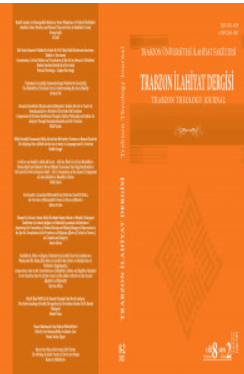Budist Sanatta ve İkonografide Buda’nın Temel Mudraları ve Fiziksel Özellikleri
Buddha’s Basic Mudras and Physical Characteristics in Buddhist Art and Iconography
Author(s): Ali GülSubject(s): Cultural history, Visual Arts, Indian Philosophy, History of Religion, History of Art
Published by: Karadeniz Teknik Üniversites - İlahiyat Fakültesi
Keywords: History of Religions; Buddha; Buddhism; Buddhist Art; Buddhist Iconography; Mudra;
Summary/Abstract: Iconographic elements are among the important sources of the history of religions as well as the history of art. From these works, extensive information about religious persons, teachings and narratives can be obtained. The Buddhism we will be working on is an extremely rich religious tradition in terms of iconography. Buddhist art, built on ancient Indian art, influenced by Persian and Greek art and incorporating the cultural color of the lands it has spread to, has produced very rich iconographic works throughout history. The key element of Buddhist iconography is Buddha. Buddha's personality, life and teaching are depicted by Buddhist artists in these works. One of the prominent points in these depictions is hand gestures called mudra. Mudras, which are evaluated by considering the general posture of the body, reveal very valuable information in terms of Buddha and the Buddhist tradition. The article in your hand, accompanied by visual elements, will focus on the basic mudras, their meaning and importance, and some prominent physical features of the Buddha in Buddhist art, and will try to reveal the importance of Buddhist iconography in conveying the Buddhist tradition and doctrine. While doing this, the study will deal with Buddhist art and iconography with perspective of history of religions, not with history of art.
Journal: Trabzon İlahiyat Dergisi
- Issue Year: 8/2021
- Issue No: 2
- Page Range: 2-40
- Page Count: 39
- Language: Turkish

